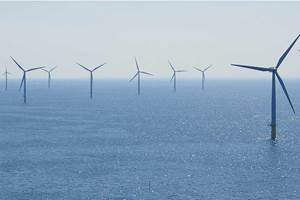Spirit AeroSystems initiates workforce reductions due to 737 MAX production suspension
Layoffs affecting 2,800 employees have been issued at the Wichita facility, due to ongoing production suspension and expected lower production going forward.

Boeing 737 MAX. Source | Boeing
On Jan. 10, Spirit AeroSystems (Wichita, Kan., U.S.) issued a notice under the Worker Adjustment and Retraining Notification Act of layoffs affecting approximately 2,800 employees at its Wichita, Kansas facility. Spirit reports that it is taking this action because of the Boeing 737 MAX production suspension, as well as ongoing uncertainty regarding the timing of when production will resume and the level of production when it does resume. Spirit says that this decision allows the company to begin aligning its cost structure to the production suspension and, after such suspension, what Spirit expects will be lower production levels than in 2019.
Spirit is a significant supplier on the 737 MAX program, with its workshare accounting for 70% of the airplane’s structure. This includes the entire fuselage, thrust reversers, engine pylons and wing components. In addition, the MAX represents more than 50% of Spirit’s annual revenue.
Spirit reports that it has not received notice from its customer, Boeing (Chicago, Ill., U.S.), on how long the production suspension will last or what the production rate will be in the future. Spirit believes that, when production resumes, the levels will be lower than previously expected, due, in part, to the customer’s need to consume more than 100 MAX shipsets currently in storage at Spirit’s facilities. In addition, Boeing has several hundred MAX airplanes built but not yet delivered to its customers.
“We continue to work with Boeing to develop a new production schedule for 2020 with an eye toward minimizing disruption, maintaining the stability of our production capabilities, and best positioning Spirit for the future.”
The company also plans to implement smaller workforce reductions later this month for its plants in Tulsa and McAlester, Oklahoma, which also produce components for the MAX. Based on final production rates agreed with Boeing, Spirit says it may have to take additional workforce actions in the future.
Employees will receive compensation for the applicable 60-day notice period, and affected employees will start exiting the company beginning Jan. 22. Th company reports that it has taken steps to lessen the impact of expected layoffs, transferring some 737 MAX employees to other programs where possible, and making plans to facilitate job fairs with other aerospace companies to help laid-off employees transition to new jobs.
“The difficult decision announced today is a necessary step given the uncertainty related to both the timing for resuming 737 MAX production and the overall production levels that can be expected following the production suspension,” says Tom Gentile, Spirit AeroSystems president and CEO. “We are taking these actions to balance the interests of all of our stakeholders as a result of the grounding of the 737 MAX, while also positioning Spirit to meet future demand.”
“Our goal is to support Boeing and a safe return to service of the MAX,” Gentile adds. “We continue to work with Boeing to develop a new production schedule for 2020 with an eye toward minimizing disruption, maintaining the stability of our production capabilities, and best positioning Spirit for the future. When production levels increase sufficiently in the future, we look forward to recalling employees impacted by today’s announcement.”
Related Content
University of Sheffield researchers to drive structural health monitoring in U.K. infrastructure
The £7.7 million program, ROSEHIPS, anticipates exploitation of machine learning, sensing and digital twin technology for automated health monitoring in infrastructure, such as bridges, telecoms masts and wind turbines.
Read MoreCoriolis Composites installs AFP machine at Sabanci University
C1 robot contributes to technology development at the Integrated Manufacturing Technologies Research and Application Center (SU IMC) in Istanbul.
Read MoreMaterials & Processes: Fabrication methods
There are numerous methods for fabricating composite components. Selection of a method for a particular part, therefore, will depend on the materials, the part design and end-use or application. Here's a guide to selection.
Read MoreThe importance of resin mixing procedures in the composites shop
What is considered to be common knowledge when storing, handling, weighing, mixing and deploying epoxy resins and adhesives has brought to light the need for tighter control, improved practices.
Read MoreRead Next
CW’s 2024 Top Shops survey offers new approach to benchmarking
Respondents that complete the survey by April 30, 2024, have the chance to be recognized as an honoree.
Read MoreFrom the CW Archives: The tale of the thermoplastic cryotank
In 2006, guest columnist Bob Hartunian related the story of his efforts two decades prior, while at McDonnell Douglas, to develop a thermoplastic composite crytank for hydrogen storage. He learned a lot of lessons.
Read MoreComposites end markets: Energy (2024)
Composites are used widely in oil/gas, wind and other renewable energy applications. Despite market challenges, growth potential and innovation for composites continue.
Read More
.jpg;width=70;height=70;mode=crop)
















.jpg;maxWidth=300;quality=90)








